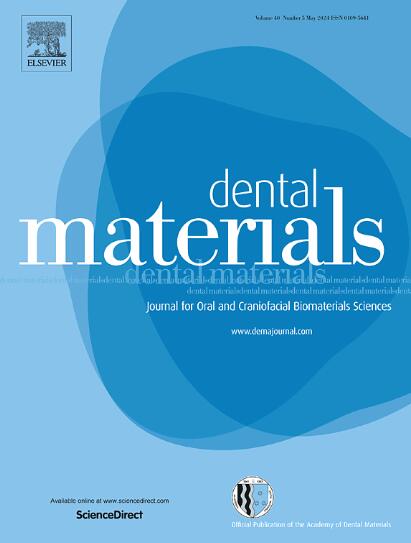Antibacterial coatings for dental implants: A systematic review
IF 4.6
1区 医学
Q1 DENTISTRY, ORAL SURGERY & MEDICINE
引用次数: 0
Abstract
Objectives
Despite the high survival rates of dental implants, peri-implantitis is a prevalent complication. Peri-implantitis is related to biofilm that adheres to the surface of implants and causes peri-implant chronic inflammation and bone destruction. Different surface treatments have been proposed to prevent biofilm formation. The objective of this systematic review was analyzing different types of antimicrobial coatings and identifying the most effective one(s) to control bacterial colonization over extended periods of analysis.
Data, sources and study selection
We performed a bibliographic search in Pubmed and Cochrane base of articles published after 2010 to answer, according to the PICO system, the following question: What is the most effective antibacterial surface coating for dental implants? Only papers including a minimum follow-up bacteria growth analysis for at least 48 h were selected. After selection, the studies were classified using the PRISMA system. A total of 40 studies were included.
Conclusions
Three main categories of coatings were identified: Antibacterial peptides, synthetic antimicrobial molecules (polymers, antibiotics, …), and metallic nanoparticles (silver). Antibacterial peptide coatings to modify dental implant surfaces have been the most studied and effective surface modification to control bacterial colonization over extended periods of incubation as they are highly potent, durable and biocompatible. However, more in vitro and pre-clinical studies are needed to assess their true potential as a technology for preventing peri-implant infections.
牙种植体抗菌涂层:系统综述。
目的:尽管种植体的存活率很高,但种植体周围炎是一种常见的并发症。种植体周围炎与附着在种植体表面的生物膜有关,并引起种植体周围的慢性炎症和骨破坏。人们提出了不同的表面处理方法来防止生物膜的形成。本系统综述的目的是分析不同类型的抗菌涂层,并确定在长期分析中控制细菌定植的最有效涂层。数据、来源和研究选择:我们在Pubmed和Cochrane数据库中检索了2010年以后发表的文章,根据PICO系统回答以下问题:种植体最有效的抗菌表面涂层是什么?只有包含至少48小时的最低随访细菌生长分析的论文被选中。选择后,使用PRISMA系统对研究进行分类。共纳入40项研究。结论:涂层主要分为三类:抗菌肽、合成抗菌分子(聚合物、抗生素等)和金属纳米颗粒(银)。抗菌肽涂层修饰牙种植体表面是研究最多的一种有效的表面修饰,可以在长时间的培养过程中控制细菌定植,因为它们具有很强的效力,耐用性和生物相容性。然而,需要更多的体外和临床前研究来评估它们作为预防种植体周围感染技术的真正潜力。
本文章由计算机程序翻译,如有差异,请以英文原文为准。
求助全文
约1分钟内获得全文
求助全文
来源期刊

Dental Materials
工程技术-材料科学:生物材料
CiteScore
9.80
自引率
10.00%
发文量
290
审稿时长
67 days
期刊介绍:
Dental Materials publishes original research, review articles, and short communications.
Academy of Dental Materials members click here to register for free access to Dental Materials online.
The principal aim of Dental Materials is to promote rapid communication of scientific information between academia, industry, and the dental practitioner. Original Manuscripts on clinical and laboratory research of basic and applied character which focus on the properties or performance of dental materials or the reaction of host tissues to materials are given priority publication. Other acceptable topics include application technology in clinical dentistry and dental laboratory technology.
Comprehensive reviews and editorial commentaries on pertinent subjects will be considered.
 求助内容:
求助内容: 应助结果提醒方式:
应助结果提醒方式:


